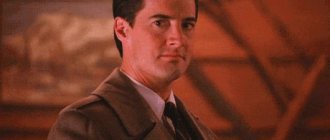When faced with a particular problem, we choose different solutions. You can follow the beaten path and use the usual algorithm. You can go from the opposite direction, or you can look at the situation from a different angle, turn left, then right and taxi in an unexpected place, where you shouldn’t be. This is the path of the pioneer. Only by trying out an unknown approach can you offer the world something unique and truly valuable. The scale doesn't matter. Creative thinking will help at work, at home and even in family life.
You can learn to think outside the box. But for this you need to practice. The habit of looking for something new and unusual is a gainful endeavor. Start with these techniques that have been used by humble workers and great pioneers. In some cases, the former turned into the latter.
Walt Disney Method
The official name of the technique is “Dreamer, Realist and Critic.” This method helped the American cartoonist not to stop there and show the world amazing characters that are popular to this day. In order to feel the effect, you need to learn to get used to the role. Remember how differently your friends react to the same event. First, pretend to be a dreamer with creative thinking without boundaries. Let go of your imagination and try to come up with the most unusual and awkward ideas one after another. Every idea needs to be written down in a notebook. If you don’t transfer your thoughts to paper or electronic media, they will continue to wander in your mind, leaving no room for new ideas. Then you need to transform yourself into a pragmatist who thinks like an engineer. He will develop strategy and tactics, thinking through every important detail. And finally, the last role is fussy. The critic should question every point and find rough edges in your well-organized theory. After his presentation, you will be able to see your idea objectively, in 3D format. Roles can be played by acquaintances, but better - you yourself. This way you will learn to see any situation from three sides.
Geography of creativity
For modern specialties (especially those related to innovation), it is the skill of generating new optimization methods and other ideas that is needed. The concept of creativity includes:
resourcefulness;- intelligence;
- quick thinking;
- determination;
- ability to take risks;
- broad outlook.
This skill is used to solve all sorts of problems in different areas. In general, the purpose of creativity is to improve, increase the functionality and power of production, increase efficiency, and leap forward. In production and science in practice, creativity is the invention of technology, equipment and production technologies.
Creative thinking makes life more comfortable, colorful and interesting. Today this is especially important in the service sector, where one of the main roles is the skill of presenting products or services. But the list of activities, of course, is not limited to this. Creativity is necessary in many areas and finds a place in almost every profession: business, art, science, politics, advertising and others.
Now in many vacancies you can read that the employer is looking for creative people . Business does not reconcile itself with conservatism; creativity in it is the ability to change according to changes in market circumstances. This trait is needed for mobility, innovation and speed of decision making. Business technologies are developing rapidly, with a steady emergence of new areas in management, advanced training courses, and so on.
In the service industry, creative thinking is needed to find fresh approaches to communication. This field requires a wealth of knowledge about people in an everyday sense, trained intuition, as well as information in the field of sociology and psychology. In sales, it is important to be able to present the product in such a way that a potential client or buyer becomes real. For example, in the hotel business, creativity can be manifested in the specifics of service or room design.
In advertising, creative thinking is the ability to present a product in a new way. People deal with a huge amount of information every day, which makes it very difficult for advertisers to attract attention without being overly intrusive. It is problems like this that are solved with the help of creativity.
Methodology of British psychologist Edward de Bono
The technique was called “Six Hats” and became very popular outside the UK. Its operating principle is similar to Walt Disney's method. In the process of thinking about a particular issue, you need to try on 6 hats. They may vary in colors or shapes. In white, you must objectively and impartially check all the facts, as if the idea was not yours; in black - look critically at the situation and find all the shortcomings of the idea; in yellow - note the advantages and disadvantages; in green - come up with new solutions that are not similar to the previous ones; in red - to react emotionally and, finally, in blue - to summarize the work done. Edward's main advice: “Always doubt everything.”
Creativity and children
The famous Pablo Picasso said: “All children are artists. The problem is staying an artist when you grow up.”
Who doesn't allow children to remain artists? Adults, and with the best intentions, who force them to think in stereotyped, standard ways.
The Englishman Sir Ken Robinson, a well-known specialist in the development of creative thinking, the author of many books on this topic, in particular “Education versus Thinking,” spoke about an incident in an art lesson in one of the English schools. The teacher noticed that one of the students was not listening to her and was busy with something of her own. "What are you drawing?" - she asked her. "I draw God." - “But no one knows what he is like!” “They’ll find out in a minute,” the girl answered.
In his speech at the TED intellectual conference, Ken Robinson spoke about the Englishwoman Gillian Lynne, the famous choreographer and director, director of the musicals “Cats”, “Phantom of the Opera”, “My Fair Lady”, etc.
What's unusual about her story? The school teachers were very unhappy with seven-year-old Gillian: her restlessness, inattention, and disgusting handwriting. She was considered a struggling student, and her mother was advised to transfer the girl to a school for children with intellectual disabilities. This prospect did not suit either Gillian herself or her mother, who went with her to a psychologist so that he could help eliminate the problem.
The psychologist observed Gillian, talked to her, and then left the room with her mother, leaving the girl alone. He first turned on the music. Through a special window, the adults began to watch her: Gillian, left alone, immediately jumped out of her chair and began to dance. Moreover, she moved with extraordinary grace and to the beat of the music.
“There is no psychological problem,” the doctor said. “The girl should be allowed to do what she likes, and not torment her with subjects that her soul is not in.” Gillian was transferred to another school - ballet. From the age of 17 she danced with the Royal Ballet, at the London Palladium, and became a famous choreographer who was not afraid to experiment with different dance styles.
In most of our schools, children's creativity is not encouraged: there are few lessons that develop children's creative abilities; they are taught to think and act in a standard way. “Why do you draw a square sun, because it’s round?”, “The sun should be drawn in the upper left corner, and the house on the right”, “Why is your hare green? It is not right".
“There’s something wrong with your child—he’s not like everyone else,” the teachers tell mom and dad. But parents should not be upset, but rejoice, because they are raising a child who thinks outside the box, who has every chance to grow up creative, unless, of course, they stifle this creativity with their own hands. Their main task is to discover the child’s abilities and help him discover them.
Steve Jobs Method
Steve Jobs never hid his working methods. He often said that creativity is the ability to connect things and processes that have nothing in common for ordinary consciousness. Creative and talented people can notice connections that are not obvious to everyone else. They connect pieces of their experience and thus synthesize something new. Pay attention to all the most popular ideas and inventions: transport, smartphones, food processors, robots, laptops, medical equipment - they are all an ingenious combination of disparate parts. Even literature and witty aphorisms are always an unexpected combination of exact words. To develop the ability to see more non-obvious connections, do the exercise with a book. Take a book and name two pages at random. On one and the other, mark the first word on the sheet. Most likely, these two words will not be related. Your job is to match them up and come up with a story that will perfectly connect these different parts, making them whole.
The most creative
Trouble shooter is considered the most creative profession in the world . These specialists have the authority to prove that Alexander Vasiliev’s statement about “there is no way out” is erroneous. The work of these professionals is often illustrated by the history of Nike. The company's personnel stole, which caused enormous losses. They invited a trouble shooter.
The plant was located in a poor country, with only local employees, so preventing theft was impossible, and bringing in European specialists was too expensive. The invited trouble shooter proposed a brilliant solution: simply produce left and right sneakers at different factories in different countries.
It is not surprising that such specialists are rare, highly sought after and receive similar fees (which reach $100 thousand/hour). As a rule, their services are of interest to very wealthy people and large corporations.
In many countries, in the last decade, magazines have begun to be published that are associated with the concept of creative thinking. Editors compile lists of the most creative people, including directors, writers, businessmen, founders and owners of advertising agencies, writers, journalists, singers and program developers. According to Creativity, the most creative people are Sachin Agarwal and Jerry Tan (who founded the Posterous platform).
Yellow press
As you know, there are many publications that are not averse to washing the bones of one or another media person. The “Yellow Press” technique will help you learn to think creatively. Imagine that your idea has become famous. What information do you think will appear in publications? Of course, many of them will begin to praise you and offer flattering headlines. But one or two magazines will certainly criticize you to smithereens. Think about what are the most terrifying headlines for articles about your ideas? This option of working on a project will help not only to take into account its negative aspects, but also to laugh at yourself. A light-hearted approach to your work helps you get rid of anxiety and give free rein to your imagination, unfettered by the fear of receiving negative public feedback.
Why do you need to develop creative thinking?
The thinking of an adult is replete with patterns and stereotypes. They make life much easier when you need to act according to an already known scheme. Reactions and actions are practiced to the point of automaticity, so we spend much less effort and time on them.
The working day of the average person consists of familiar actions and manipulations. We come to the office, sit down in our own chair, look through email, and perform a number of routine tasks. And so on day after day. For all these actions, strong neural networks are formed in our brain.
But life doesn't always go according to plan. When a situation arises that does not fit into the usual pattern and requires qualitatively new actions, we fall into a stupor. It is incredibly difficult to move away from the usual stereotypes. It's like driving off a deep rut on a country road.
A person who is able to quickly rebuild and adapt to changing conditions turns out to be several times more effective. Therefore, it is necessary to develop creative thinking. It makes the mind more flexible, plastic, and variable. And it allows you to successfully solve not only familiar routine tasks, but also qualitatively new ones.
Developed creative thinking is an integral characteristic of a person whose activity is related to creativity in one form or another. And these are not only artists, writers and musicians. Many modern fashionable professions fall under this category: marketer, PR manager, designer, copywriter, content manager and others. The world is changing and requires a person to be able to quickly adapt to these changes.
Creative designer
Ask your friends to write 10 unrelated words on a piece of paper. These could be the words “orange”, “spring”, “iron”, “bear” and others. There may be more words over time. You are a designer who works with a strange client. Your customer cannot describe the order in any other way than these 10 words. You need to design a house or decorate an apartment in such a way as to take into account all the stated requirements. And then your thinking will come into play. “Orange” can be included in the interior in the form of chairs upholstered in the form of citrus skins, “spring” will be a convenient system for the outflow of water from the house, “iron” will be bronze figures at the entrance, “bear” will be the painting “Morning in a Pine Forest.” In this case, it is desirable that all objects and systems are combined with each other and form a single concept. After some time, you will be able to hear many contexts in one word, and many new ideas in one thought.
How to learn to think creatively?
When technology takes over routine tasks, and artificial intelligence processes information many times faster than a person, the most important ability that will not lose its value as the market transforms is the ability to think creatively. Wouldn't it be great to be able to harness your imagination, learn to use your creative energy to solve problems, and not have to wait for moments of insight? Science proves that it is possible and accessible to anyone with proper training.
With the help of certain cognitive techniques and tools, you can develop creative thinking, the ability to see the unusual in the ordinary and the simple in the complex. Oksana Pikuleva in her online course “Creative Thinking in Business” suggests considering creative thinking as “controlled mental activity with the aim of developing non-standard solutions to complex business problems.”
The author of the course, Doctor of Psychology, teacher of the MBA and Executive MBA programs at the Graduate School of Management of St. Petersburg State University, sought to collect and structurally present all available information about creative thinking techniques. To do this, the author participated in various trainings for two years and studied creativity programs in order to understand which tools most effectively help managers make original and non-standard decisions.
Previously, the course was available only to students of Executive MBA programs, but now it is open to everyone. It presents the main types of creative techniques (questioning, analytical, associative and metaphorical), within these types 15 individual/team techniques and 4 major creative methodologies (TRIZ, lateral thinking, design thinking and CRAFT) are considered.
Below we will look at some of the techniques that help stimulate personal creativity, but for now we will look at the process itself. All creative solutions can be found in two ways: the first (by which most scientific discoveries were made) is insight
method, and the second is
algorithmic
, with its help you can significantly expand your personal range of non-trivial solutions.
An individual creative session should begin with a clear formulation of the task. Once the goal is determined, you can begin collecting information. At this stage, you need to review and analyze what has already been done on your topic/problem. It is advisable to pass through as much material as possible to ensure the so-called observation effect. The next step is the synthesis of the information received and the generation of ideas. According to the author, creativity is born at the intersection of other people's ideas and their unexpected combinations. An important condition is to allow yourself to enter a state of wandering mind, relax after the concentration stage and not think about the task for a while, perhaps switch to another type of activity. This is where the insightful “Bus, Bed, Bath” approach can also help us. Often it is at this stage that the “creative leap” is made. The fourth step is to select the most viable solutions for implementation from the entire pool of ideas. And this is the first stage at which you can allow yourself to look critically and realistically at the thoughts that arise. If the search for solutions occurs within the framework of a business process, the fifth stage arises - presentation and defense of your idea.
To make our creative sessions (personal or team) more effective, we can use various techniques to stimulate the so-called. unconventional thinking. Everyone can assemble their own personal “set of favorite tools” that allow them to find non-standard solutions. Among them may be:
— questioning techniques, which include, for example, Rudyard Kipling’s deceptively simple-looking Q-storming method “5W1H”
. If you need to solve some difficult problem, you can consistently achieve this using the 5W questioning scheme - “What? When? Where? Why? Who?" and 1H - “How?”, selecting at least 5 questions for each position, starting with the corresponding question word.
— analytical techniques that allow you to expand your thinking corridors. Among them, one of the most effective is the “TRANSFORM” method by J. Ayan and D. Berg. He offers a specific list of 36 action verbs in tabular form. When using the "TRANSFORM"
look at the cells in any order and apply the steps one at a time to solve your problem.
If a word gives you an idea, write it down; if not, move on to another word. Work until you run out of thoughts. For example, let's say you decide to increase your company's sales by 10%. The table may lead to the following ideas: lower
the price to increase the number of orders,
increase
bonuses,
get rid
of old promotions,
transfer
orders from the next quarter to the current one,
simplify
paperwork to encourage customers to buy more,
establish a network of connections
, etc.
- associative techniques, among which one of the most popular is the method of focal objects by Charles Whiting
. Like other techniques of this group, it has its own clear algorithm of mental actions:
- Select the object that needs to be changed (focal object).
- Formulate the purpose of the change.
- Name several random objects.
- Make a list of signs and properties of these random objects.
- Transfer the found signs and properties to the focal object.
- Evaluate the ideas received and select the most useful ones for implementation.
- metaphorical techniques that take us beyond the boundaries of habitual thinking and help us sometimes find the most unexpected ideas. Metaphorical techniques are very numerous, but one of the most popular is the “6 colored hats” method of lateral thinking by Edward de Bono
, allowing you to sequentially turn on and switch 6 different modes of thinking.
You can also remember Walt Disney's "three thinking chairs" method
. Its essence is in opening a different angle of view on the problem, when you imagine yourself successively in three roles: dreamer - WHAT (future), realist - HOW (present) and critic - WHY (past). And then you analyze the results of your creative session and select the ideas you need.
All of the above techniques often work in complete conjunction with each other, their effects are difficult to separate, so true creative thinking gradually becomes interdisciplinary and metadisciplinary.
For those who want to receive other tools and tips for developing creativity and gain a complete understanding of creative thinking, the full course of the Graduate School of Management of St. Petersburg State University is available. The program consists of two blocks:
— management of personal creativity and
— managing team creativity.
The first block examines neuroscientific approaches to creativity, mental patterns, thinking corridors, models of non-standard thinking, techniques for developing personal creativity and other topics. In particular, one of the most fascinating topics in this module is the analysis of the mental models of geniuses, which we can try on ourselves and try to think in their paradigm. The second part deals with innovation in business, creating a stimulating environment in a team, the creative process in a group, and examines four major creative methodologies: TRIZ, lateral thinking, design thinking and CRAFT.
Museum of one painting
This exercise is ideal for designers and creatives involved in branding. You need to imagine that you are opening a museum where there will be only one painting. Your task is to design the space in such a way that every sign and object reflects the artist’s message. You need to make pictograms that will be used to decorate the entire museum space. For example, if your painting is “The Persistence of Memory” by Salvador Dali, you need to play up the theme of the clock on the signs in the cafe, toilet, wardrobe. How will they look and reflect the essence of the location? You decide.
Working with ciphers
In order for your idea to take off at the right moment, you need to have several narratives and stories. Take a fragment of any cipher: it could be Japanese hieroglyphs or ancient Egyptian symbols. Looking at the image, think of what the signs might mean, and make up any story based on your own assumption. You will be surprised how bright and non-trivial stories your brain can come up with.
How often should you exercise?
It is advisable that the search for new ideas and non-trivial connections become your habit. To begin with, it is enough to perform any of the above exercises daily for 10-15 minutes. Then it makes sense to incorporate your favorite methods into your regular work. When thinking about how to solve a particular problem, consider inventing your own method to make your work easier.
Another useful exercise for developing lateral thinking is humor. If you are not a natural joker, pay attention to how jokes are constructed in Russia and abroad. An example would be Stand Up or other shows that are close to your spirit. A good joke is always an accurate observation that reveals unexpected connections between phenomena and situations. Learn to see the funny in the sad and vice versa. Such exercises will help develop creative abilities in the professional and personal spheres.
Back Next
What is creativity?
So, creativity can be defined in many different ways, and psychologists and mind researchers have debated this topic for decades.
However, if you look at the essence, creativity is the ability to find new solutions to known problems.
In Russian, this is ingenuity.
This short and succinct definition conveys the whole essence and also the role that creativity plays in human life. It is necessary in order to go beyond the templates and create some new option, to open a new path.
Now for a more succinct definition:
Creativity is a property of the mind that is inherent in every person, but in the process of education and development, in most people these abilities are in an inactive state.
An immeasurable value is translated from English as human creative abilities and capabilities. It manifests itself in all aspects of everyday activity, ranging from some inventions, getting out of difficult situations, business, creativity, success in life and career, and ending with relationships.
In modern society, along with quality education, there is a demand for people with a creative and imaginative mindset who are able to go beyond the usual solutions.
Accordingly, developing the ability to think outside the box inevitably leads to an improvement in the quality of life, career growth, the development of new professional areas, creativity is a necessary condition for business and success in life.
A creative person has a number of advantages: he is more interesting, he can find solutions to complex issues, innovative ways and approaches to achieving goals.
This can especially manifest itself in business and marketing, where there is a lot of competition and similarity between various competitors, finding alternative solutions and non-trivial approaches makes it possible to get ahead and get ahead of others.











